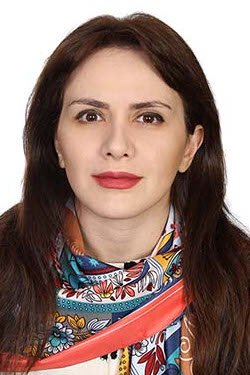Zahra Abdollahnejad
2020 Regional Award Finalist — Post-Doc

Current Position:
Postdoctoral Researcher
Institution:
University of Connecticut
Discipline:
Civil Engineering

Current Position:
Postdoctoral Researcher
Institution:
University of Connecticut
Discipline:
Civil Engineering
Recognized for: Forward-thinking design and development of green construction materials for buildings. Concrete is responsible for 4-8% of the world’s global carbon dioxide (CO2) emissions. Through her development of specialized mixtures of environmentally-friendly concretes, mortars, and insulating components, Abdollahnejad could significantly reduce the impact of concrete on global warming by 50-90% compared to cementitious compositions, making newly constructed buildings more energy-efficient. Her work is re-shaping how the construction industry uses concrete, creating more sustainable buildings for our future.
Areas of Research Interest and Expertise:
Alkali-activated Binders, Recycled Cement Materials, Microstructural Analysis of Cement Materials, Structural Engineering, Geo-polymer Concrete
Previous Positions:
BA, Azad University, Iran
MA, Azad University, Iran
PhD, Plymouth University, UK (Advisor: Linda Watson)
PhD, Minho University, Portugal (Advisor: Jose Barroso Aguiar and Fernando Pacheco Torgal)
Postdoctoral Research Fellow, Minho University, Portugal (Advisor: Fernando Pacheco Torgal)
Postdoctoral Research Fellow, Oulu University, Finland (Advisor: Mirja Illikainen)
Postdoctoral Researcher, University of Connecticut (Advisor: Kay Wille)
Research Summary:
Zahra Abdollahnejad, PhD, is a materials scientist and engineer tackling urgent civil engineering problems with geochemical underpinnings. Her work on green, sustainable construction materials for buildings is quite literally re-shaping the way the construction industry views concrete—a material that is responsible for approximately 4% to 8% of world’s global carbon dioxide (CO2) emissions. Abdollahnejad began her career in architectural conservation, excavating and renovating historic sites and old buildings in Qazvin, Iran. Her work in the conservation of monuments provided her with a unique perspective and has informed her present work on the development of green, sustainable building materials, like concrete.
Abdollahnejad’s work on concrete has proven that greener construction materials can, not only, dramatically enhance the mechanical properties of these materials, but can also be environmentally-friendly. To reduce the impact of concrete on global warming, she developed specialized mixtures of concretes and mortars activated by chemical elements. The mixtures use discarded or recycled waste materials from industrial iron blast furnaces, along with natural fibers like hemp, to not only enhance the strength of the concrete, but also to capture the greenhouse gas CO2 through a process called carbonation, greatly reducing the carbon footprint of concrete by 50-90% compared to cementitious compositions. Abdollahnejad has also developed a novel type of foam insulation material—a concrete-based foam that will make buildings more energy efficient. The foamed concrete is cost-effective as a building material and also non-toxic to the environment. Her work spans a range of problems in civil engineering and her forward-thinking ideas are moving the construction industry onto a more sustainable and eco-friendly path.
Many women do not pursue or persist in science careers, or advance to leadership positions — not because they lack the talent or aspirations, but because they face barriers. The Blavatnik Awards for Young Scientists provides equal opportunity for women and other underrepresented groups in science and engineering, which is a valuable endeavor.
Key Publications:
T. Luukkonen, Z. Abdollahnejad, J. Yliniemi, P. Kinnunen, M. Illikainen. Comparison of alkali and silica sources in one-part alkali-activated blast furnace slag mortar. Journal of Cleaner Production, 2018.
Z. Abdollahnejad, M. Mastali, T. Luukkonen, P. Kinnunen, M. Illikainen. Fiber-reinforced one-part alkali-activated slag/ceramic binders. Ceramics International, 2018.
Z. Abdollahnejad, T. Luukkonen, M. Mastali, P. Kinnunen, M. Illikainen. Development of one-part alkali-activated ceramic/slag binders containing recycled ceramic aggregates. Journal of Materials in Civil Engineering, 2019.
Z. Abdollahnejadet al. Effects of waste ground glass and lime on the crystallinity and strength of geopolymers. Magazine of Concrete Research, 2018.